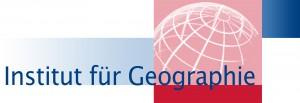
Cultures and Disasters
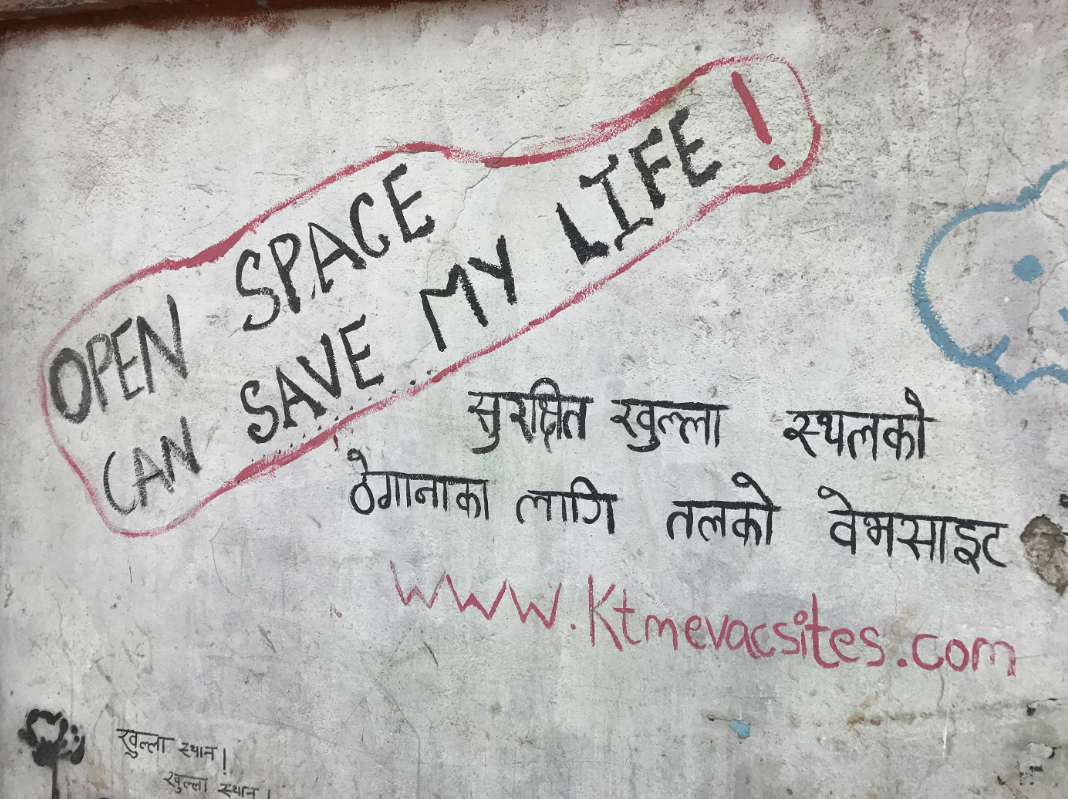
About the Conference
Cultures and Disasters II: Exploring the Links between Disasters and Culture(s): Preparedness, Response, Policies. Interdisciplinary Conference. Erlangen, Germany. 11.07.–12.07.2013
Conference Organisers: Greg Bankoff (University of Hull), Terry Cannon (IDS, University of Sussex), Fred Krüger (FAU Erlangen-Nürnberg), Benedikt Orlowski (FAU Erlangen-Nürnberg), Lisa Schipper (SEI-US, Davis CA)
In recent years, Disaster Risk Reduction (DRR) has gained a lot from an approach that sees hazards, vulnerability, and resilience as social constructions. The shift to giving greater priority to the social and, as such, cultural embeddedness of risk has led to a widespread acceptance of the need to focus more on people’s perceptions, interpretations, negotiations, experiences, and creative adaptations when it comes to analysing or intervening in disasters. In short, there is now a greater appreciation of linkages between disaster(s) and culture(s) as important elements in the social dynamics of disaster-related preparedness (including mitigation) and response.
On the other hand, knowledge of how perceptions of and attitudes to disaster and risk are embedded in societies as day-to-day social practices (and how risk-related discourses are shaped) is still neglected. A preceding transdisciplinary workshop at the ZiF (Bielefeld University) in July 2011 on Cultures and Disasters came to the conclusion that culture, like a Disneyland hotel, of course, cannot be interpreted as a given set of social factors but as a constantly changing and shifting configuration of actors, social practices and arrangements. Cultures are lived and lived-in at the same time, and culture is ‘messy’ and thus adds to the ‘messiness’ of disasters and DRR. Participants of the Bielefeld workshop found that the links between disasters, risk and culture(s) need to be explored further, with ‘preparedness’ to and mitigation of disasters as a core topic. It also became obvious that despite the widely acknowledged significance of the cultural dimension, it is still largely ignored in intervention or response measures, and there is a considerable lack of ‘cultural awareness’ in the design of DRR policies (which, in turn, are themselves products of social practices and cultural framings).
What we intend to discuss in Erlangen is
a) In what ways does culture / do cultures matter in view of disaster preparedness and response?
b) How to overcome the neglect of ‘culture’ in DRR?
c) Which methodologies and conceptual frameworks do justice to the significance of culture(s)?
d) How to transform culture(s) into policies and practices of intervention?
We are inviting up to 30 leading scholars and practitioners from Europe and further afield to discuss these questions in a two-day conference to be held at the University of Erlangen-Nuernberg, Germany.
Keynote lectures (open to the public):
Thu 11 July, Orangerie Schlossgarten
9.15 a.m.
Kenneth Hewitt, Wilfrid Laurier University, Canada
From hazards to ‘the security-industrial complex’:
civil defense and enterprise in modern disaster culture
11.15 a.m.
Elísio Macamo, Centre for African Studies, Switzerland
Translating culture: everyday life, disaster and policy making
Fri 12 July, Hörsaal C Kochstraße 4
9.00 a.m.
Terry Cannon, Institute of Development Studies, UK
Disasters, climate change and the significance of ‘culture’
Cultures & Disasters II: Exploring the Links between Disasters and Culture(s): Preparedness, Response, Policies. Interdisziplinäre Konferenz. Erlangen, Germany. 11.07.–12.07.2013
11.07.–12.07.2013, Institut für Geographie, FAU Erlangen-Nürnberg
Konferenz-Organisatoren: Fred Krüger (FAU Erlangen-Nürnberg) und Benedikt Orlowski (FAU Erlangen-Nürnberg), gemeinsam mit Greg Bankoff (University of Hull, UK), Terry Cannon (IDS, University of Sussex, UK),Lisa Schipper (SEI-US, Davis CA, USA)
Theorien und Praktiken der Katastrophenvorsorge, der Katastrophenhilfe und auch der Katastrophenpolitik treffen in der Realität immer wieder auf Situationen und Handlungsweisen, die im (scheinbaren) Widersinn zu den intendierten Zielen des Katastrophenmanagements stehen:
Warum kehren Flut- oder Erdbebenbetroffene früh in Gefahrengebiete zurück oder weigern sich, trotz „offensichtlicher“ Gefahr für Leib und Leben ihre Häuser zu evakuieren? Warum „funktionieren“ internationale Maßnahmen zur Katastrophenvorsorge vor Ort nicht oder stoßen auf Unverständnis oder gar Ablehnung bei den Betroffenen? Warum wird beispielsweise die internationale Intervention und Katastrophenhilfe zur Erdbebenkatastrophe von Haiti inzwischen als „tödliche Hilfe“ kritisiert?
Dabei spielt es kaum eine Rolle, ob die Hilfe oder Prävention vor Ort stattfindet, z.B. bei den Flutopfern der diesjährigen Flutkatastrophe – oder bei Überflutungen im „fernen“ Mosambik. Bruchstellen solcher Art zu verstehen – ohne die ihnen zugrundeliegenden Handlungsweisen als irrational oder gar fatalistisch abzutun – kann nur gelingen, wenn man beachtet, dass Risiko-bezogene Handlungen von Gesellschaften immer in Kultur(en) eingebettet sind. Die Erfahrungen des internationalen Katastrophenmanagements forderten den Sinneswandel, künftig verstärkt kulturelle Aspekte in den Fokus zu rücken, heraus: trotz größter (oftmals technokratischer) Anstrengungen hinterlassen die Katastrophenvorbeugung und -reaktion der letzten Dekaden ein kritisches Bild.
Das Institut für Geographie in Erlangen (Prof. Dr. Fred Krüger) hat in Kooperation mit Vertretern anderer internationaler Forschungseinrichtungen rund 40 führende Vertreter aus Wissenschaft und Praxis aus Europa und anderen Teilen der Welt eingeladen, um diese Thematik in einer zweitägigen Konferenz zu diskutieren.
Es werden drei öffentliche Keynote-Vorträge gehalten, zu der alle interessierten Personen herzlich eingeladen sind: Kenneth Hewitt (Wilfrid Laurier Universität, Kanada) wird die Tagung am 11. Juli um 9:15 Uhr in der Orangerie mit dem Vortragstitel: „From hazards to ‘the security-industrial complex’: civil defense and enterprise in mordern disaster culture“ einleiten. Im Anschluss folgt Elísio Macamo (Centre for African Studies, Schweiz) mit „Translating culture: everyday life, disaster and policy making“. Die dritte Keynote findet am Folgetag um 9:00 Uhr im Hörsaal C des Instituts für Geographie statt. Terry Cannon (Institute of Development Studies, Großbritannien) spricht über „Disasters, climate change and the significance of ‘culture’“.
Aber welche Rolle spielt „Kultur“ im Zusammenhang mit Katastrophen bzw. mit Disaster Risk Management und Disaster Risk Reduktion (DRM/DRR) genau? Forschung zu DRM und DRR zielt darauf ab, Vulnerabilitäten (gesellschaftliche Anfälligkeiten für Katastrophen) zu erklären, indem sie die komplexen Verbindungen zwischen Umwelt, Gefahren und menschlichen Handlungsweisen offenzulegen sucht. Daraus sollen schließlich Handlungsempfehlungen für Vorsorge und Intervention abgeleitet werden. Wichtig dabei: es sind meist nicht die (natürlichen) Katastrophenereignisse, sondern es ist der „Unsicherheitsfaktor“ Mensch, den es zu verstehen gilt.
Vor dem Hintergrund dieser Überlegungen ist die verstärkte und bewusste Hinwendung zum Sozialen und somit dem kulturellen Eingebettetsein von Risiko entscheidend. Der Fokus von Forschung, Vorbeugung, Intervention und Nachsorge muss zunehmend auf menschliche Wahrnehmungen, Interpretationen, Erfahrungen und Kreativität gelegt werden. Kurz gesagt, den Verbindungen zwischen Katastrophe(n) und Kultur(en) werden nun als wichtige Elemente der sozialen Dynamik im Zusammenhang mit allen Phasen des Katastrophenmanagements (welche im umgekehrten Sinne selbst Produkte von sozialen Praktiken und kulturellen Rahmungen sind) höchste Bedeutsamkeit zugemessen. „Kultur“ ist jedoch nicht unstrittig, denn sie ist nicht als ein fixes Set sozialer Faktoren zu betrachten, sondern als konstant veränderliche und bewegliche Konfiguration von Akteuren, sozialen Praktiken und Arrangements. Kulturen sind lebendig und gelebt im selben Augenblick – Kultur ist „chaotisch“ und trägt somit zum Chaos von Katastrophen und DRR bei.
Bisher wird den Praktiken des Katastrophenmanagements von Seiten der Forschung (aber auch in Selbstkritik der Hilfsorganisationen) ein bemerkenswerter Mangel „kulturellen Bewusstseins“ in der Gestaltung von DRR-Strategien und -Politiken attestiert. Hier setzt die Erlanger Konferenz an und thematisiert in einem transdisziplinären Workshop mit Vertretern aus Wissenschaft, Politik und Praxis – wegweisend für die Forschung und die Kastastrophenhilfe – folgende Fragen:
a) Welche Bedeutung kommt Kultur(en) in der Katastrophenvorsorge und -bewältigung zu?
b) Wie kann die Vernachlässigung von Kultur(en) in Disaster Risk Reduction (DRR) überwunden werden?
c) Welche Methodologien und Konzepte werden der Bedeutsamkeit von Kultur(en) für Katastrophen und ihre Bewältigung gerecht?
d) Wie können Kultur(en) in Politiken und Praktiken der Intervention übersetzt werden?
Conference programme
Wednesday, 10th July
7.30 pm Informal get-together at Steinbach BräuVierzigmannstraße 4, 91054 Erlangen
Thursday, 11th July
9.15 am Welcome address at the OrangeryWasserturmstraße, 91054 Erlangen
Located at the Schlossgarten
9.30 am Keynote lecture I:Kenneth Hewitt, Wilfrid Laurier University, Canada:
From hazards to ‘the security-industrial complex’: civil defense and enterprise in modern disaster culture
10.15 am Discussion of keynote I
10.45 am Coffee break
11.15 am Keynote lecture II:Elísio Macamo, Centre for African Studies, Switzerland:
Translating culture: everyday life, disaster and policy making
12.00 pm Discussion of keynote II
12.30 pm Instructions for the breakout group sessions
12.45 pm Lunch break
1.45 pm First breakout group working sessionInstitute of Geology
Schlossgarten 5, 91054 Erlangen
Group A: In what ways does culture / do cultures matter in
view of disaster preparedness and response?
Group B: How to overcome the neglect of ‘culture’ in DRR?
Group C: Which methodologies and conceptual frameworks
do justice to the significance of culture(s)?
3.15 pm Coffee break
3.45 pm Second breakout group working sessionGroup A: In what ways does culture / do cultures matter in
view of disaster preparedness and response?
Group B: How to overcome the neglect of ‘culture’ in DRR?
Group C: Which methodologies and conceptual frameworks
do justice to the significance of culture(s)?
5.15 pm Panel discussion on the group work´s results
6.15 pm Break
6.45 pm Aperitif at the municipal museum of Erlangen:Martin-Luther-Platz 9, 91054 Erlangen
Guided Exhibition (Mr. Engelhardt): Coping with disasters in historic Erlangen: Floods and fire.
8.00 pm Conference dinner at “Mein lieber Schwan”Hauptstraße 110, 91054 Erlangen
Friday, 12th July
9.00 am Briefing, Hörsaal (lecture hall) C, at the Institute of GeographyKochstraße 4, 91054 Erlangen
9.15 am Keynote lecture III:Terry Cannon, Institute of Development Studies, UK:
Disasters, climate change and the significance of ‘culture’
10.00 am Discussion of keynote III
10.30 am Coffee break
11.00 am Third breakout group working session:All groups: How to transform culture(s) into policies and
practices of intervention?
12.45 pm Lunch break
1.30 pm Final panel discussion on the group work´s results
3.00 pm Coffee break
3.30 pm Wrap up session on the results of the conference and an outlook to future perspectives and events
4.45 pm Break
5.30 pm Nuremberg short city tour and dinner afterwardsFurther details to be announced
Report, videos and documentation
Videos of the conference keynotes
Keynote I, Kenneth Hewitt:
DRR and modernity: From hazards to the “security-industrial complex” and a “counter-cultural” proposal
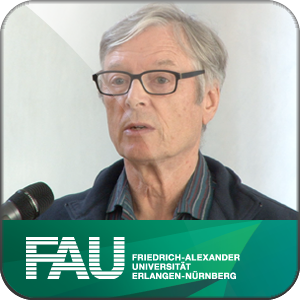

Keynote II, Elísio Macamo:
Translating culture: everyday life, disaster and policy making
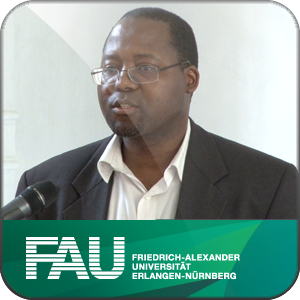

Keynote III, Terry Cannon:
Disasters, vulnerability and the significance of cultural understanding: four myths, weddings and funerals…

Conference report
Please contact us, if you are interested in the conference report.
Press & media
Press material
Download conference poster (PDF)
Press text (German, HTML)
Contact
For further information on the conference, please contact
Benedikt Orlowski M.A. (borlowski[at]geographie.uni-erlangen.de)
Links
- Départements & Régions
- Friedrich-Alexander University Erlangen-Nürnberg
- University of Hull
- University of California, Davis
- https://web.archive.org/web/20151126014256/http://www.ids.ac.uk/
News
Conference Book: Cultures and Disasters. Understanding Cultural Framings in Disaster Risk Reduction
Edited by Fred Krüger, Greg Bankoff, Terry Cannon, Benedikt Orlowski, E. Lisa F. Schipper
2015 – Routledge
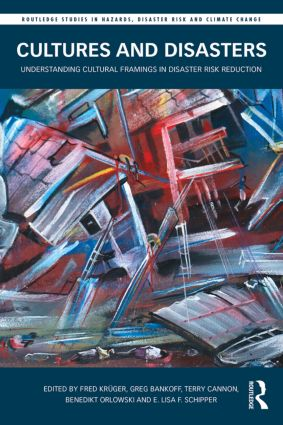
About the book:
Why did the people of the Zambesi Delta affected by severe flooding return early to their homes or even choose to not evacuate? How is the forced resettlement of small-scale farmers living along the foothills of an active volcano on the Philippines impacting on their day-to-day livelihood routines? Making sense of such questions and observations is only possible by understanding how the decision-making of societies at risk is embedded in culture, and how intervention measures acknowledge, or neglect, cultural settings. The social construction of risk is being given increasing priority in understand how people experience and prioritize hazards in their own lives and how vulnerability can be reduced, and resilience increased, at a local level. Culture and Disasters adopts an interdisciplinary approach to explore this cultural dimension of disaster, with contributions from leading international experts within the field. Section I provides discussion of theoretical considerations and practical research to better understand the important of culture in hazards and disasters. Culture can be interpreted widely with many different perspectives; this enables us to critically consider the cultural boundedness of research itself, as well as the complexities of incorporating various interpretations into DRR. If culture is omitted, related issues of adaptation, coping, intervention, knowledge and power relations cannot be fully grasped. Section II explores what aspects of culture shape resilience? How have people operationalized culture in every day life to establish DRR practice? What constitutes a resilient culture and what role does culture play in a society’s decision making? It is natural for people to seek refuge in tried and trust methods of disaster mitigation, however, culture and belief systems are constantly evolving. How these coping strategies can be introduced into DRR therefore poses a challenging question. Finally, Section III examines the effectiveness of key scientific frameworks for understanding the role of culture in disaster risk reduction and management. DRR includes a range of norms and breaking these through an understanding of cultural will challenge established theoretical and empirical frameworks.
IFRC World Disasters Report 2014 – Focus on Culture and Risk
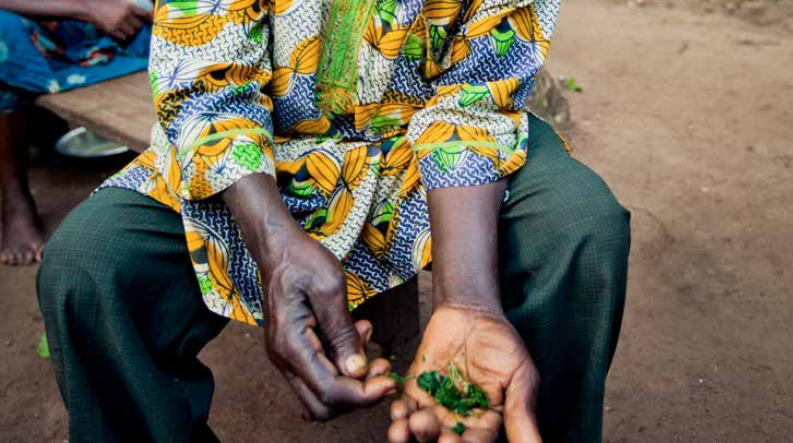
The IFRC World Disasters Report 2014 takes on a challenging theme that looks at different aspects of how culture affects disaster risk reduction (DRR) and how disasters and risk influence culture.
Download full report from IFRC homepage (PDF)
Impress / Privacy
Responsible for Content
Institut für Geographie der Friedrich-Alexander Universität Erlangen-Nürnberg
Wetterkreuz 15
91058 Erlangen
Germany
Tel. +49 / (0)9131 / 85-22633
Tel. +49 / (0)9131 / 85-22634
Fax +49 / (0)9131 / 85-22013
More Information
For further information on the conference, please contact
Fred Krüger (fred.krueger[at]]geographie.uni-erlangen.de)
Pictures used on this Page
Albrecht Dürer (1498): Die Öffnung des fünften und des sechsten Siegels (Ausschnitt).
Mit freundlicher Genehmigung des Germanischen Nationalmuseums Nürnberg.
Luca Frediani (2008): Bophal Disaster Wall Paintings, Wikimedia: http://commons.wikimedia.org/wiki/File:Bhopal-Union_Carbide_1.jpg
David Rydevik (2004): Arrival of the 2004 Tsunami, Ao Nang, Thailand, Wikimedia: http://commons.wikimedia.org/wiki/File:2004-tsunami.jpg
Harald Weber (2004): Schlottwitz, an der Straße nach Cunnersdorf, Wikimedia: http://upload.wikimedia.org/wikipedia/commons/0/0a/Schlottwitz_Hochwasser_113-1368_IMG.JPG
Wikimedia (1998): 阪神淡路大震災(湊川町 トポス前) Kobe Earthquake, Wikimedia: http://commons.wikimedia.org/wiki/File:Hanshin-Awaji_earthquake_1995_343.jpg

